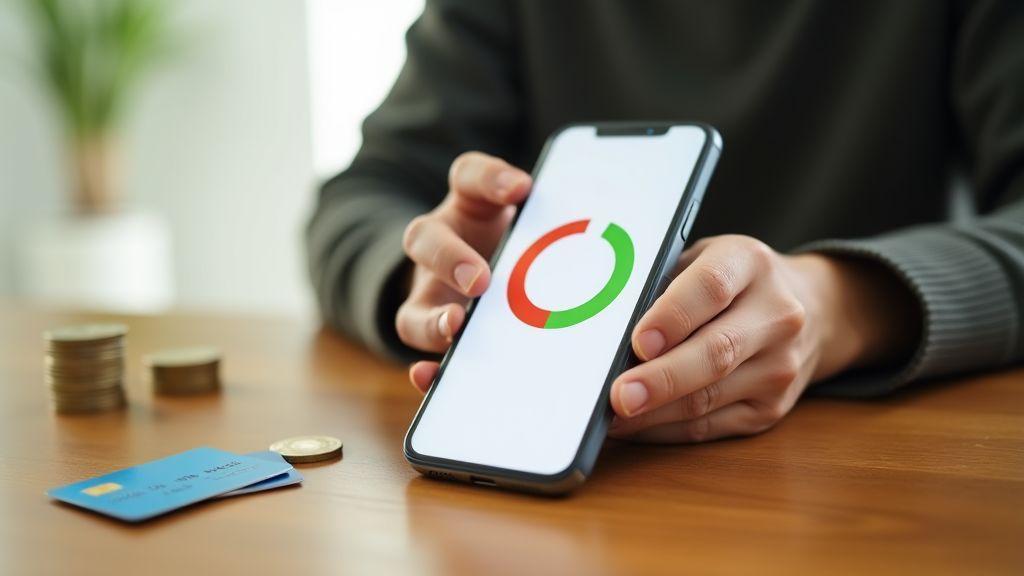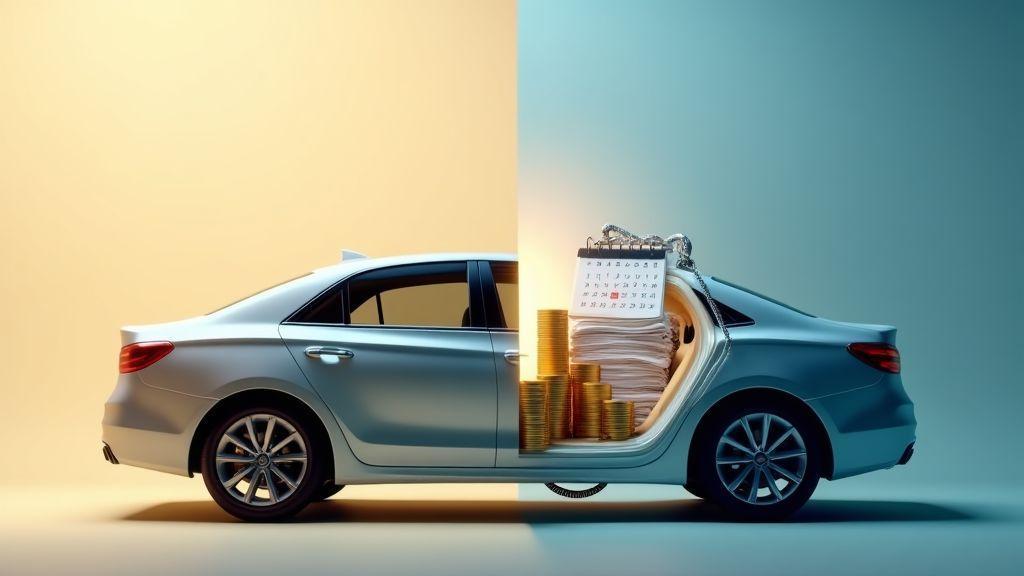Pros and Cons of 0% APR Car Deals — Are They Worth It?
You’ll get a short, practical guide to how 0% APR can cut interest and lower monthly payments, simple math to spot real savings, how your credit score and loan term change the deal, where hidden costs hide, how to compare cashback versus 0%, and smart negotiation moves. Read this to know what to check before you sign.
Key Takeaway
- You avoid interest and pay less over the loan if the price is fair.
- You generally need excellent credit to qualify.
- Dealers may raise the vehicle price or remove rebates to offset 0% APR.
- You could lose cash-back rebates or other incentives.
- Always compare the total cost, not just the rate or monthly payment.

Clear benefits you get from 0% APR car financing
You get a clear win with 0% APR because it means no interest on the financed portion. That can shave hundreds or thousands off what you’d otherwise pay over time. When you read 0%, think straight savings on interest—money that stays in your pocket or can go into repairs, gas, or savings.
But the offer comes with strings. Dealers often require excellent credit, a new car, or specific terms. Sometimes the vehicle price is higher or you must give up a manufacturer rebate. That trade-off can wipe out interest savings if you don’t compare totals. Also watch limits on flexibility: shorter terms, strict payoff rules, or penalties if you sell early can reduce the value of the deal.
How 0% interest auto loans cut your interest costs
The main advantage is simple: you pay zero interest. If you finance $25,000 at 0% for five years, you won’t pay interest. With a typical APR, that same loan could cost several thousand dollars. There’s also a budgeting win: predictable payments and no surprise interest make planning easier. If you qualify, 0% can be the cheapest financing for a new car—just check the fine print.
When 0% APR lowers your monthly payment for new cars
A 0% loan often lowers monthly payments if the term and sale price match a standard loan. If you compare a 60-month loan at 0% to a 60-month loan at 4% for the same price, the 0% will lower your monthly outlay. But dealers sometimes extend the term or raise price to keep monthly payments low while recovering costs elsewhere.
Checklist to evaluate a 0% offer:
- Compare the total purchase price with and without the 0% offer.
- Add fees, taxes, and check whether you lose a manufacturer rebate.
- Calculate total paid over the full term for both options.
- Confirm loan term and early-payoff rules.
Simple math you can use to see your interest savings
Example: price $30,000, term 60 months. At 0%, monthly = $500 and total = $30,000. At 4% APR, monthly ≈ $552 and total ≈ $33,120. You save about $3,120 in interest with 0%.
| Scenario | Price | Term | Monthly Payment | Total Paid | Interest Saved |
|---|---|---|---|---|---|
| 0% APR | $30,000 | 60 mo | $500 | $30,000 | $3,120 |
| 4% APR | $30,000 | 60 mo | $552 | $33,120 | — |
Drawbacks of 0% APR financing you should know about
0% APR sounds like free money, but the headline can hide trade-offs. Dealers can raise the vehicle price or require you to forfeit rebates. Offers often require excellent credit and are limited to specific models or trims. Read small print for dealer add-ons, trade-in rules, and payoff terms. Treat 0% as a tool, not a trophy.
Common drawbacks like higher vehicle price
Dealers or manufacturers may raise the sticker or remove discounts to cover the cost of offering 0% financing. The headline monthly payment looks lower, but the base price you pay over time can be higher. A simple comparison — MSRP plus dealer markup vs. a cash price with a rebate — can flip a steal into a wash.
| Option | Price you pay | APR | Term | Estimated extra cost vs. alternative |
|---|---|---|---|---|
| 0% APR (no rebate) | $25,000 | 0% | 60 months | $0 interest, but may include $1,500 markup |
| $2,000 Rebate 3.99% APR | $23,000 (after rebate) | 3.99% | 60 months | ~$1,800 interest — total may be similar |
How limited offers and strict rules can reduce your gain
Offers are often for short times and specific models. You might rush into a car you don’t want to grab the rate. Strict rules include mandatory financing through the manufacturer’s bank, credit thresholds, and loss of other incentives. If you accept dealer add-ons or don’t qualify, the 0% evaporates.
Hidden costs in 0% APR car offers to watch for
Don’t get blindsided. Watch for:
- Dealer markups and added fees for preparing the car.
- Lost rebates or incentives if you pick 0% over cash offers.
- Optional extras pushed at signing (warranties, paint protection).
- Higher insurance or GAP costs tied to the financed value.
- Early payoff penalties or clause limits that reduce flexibility.
Before sharing personal data online or with lenders, review privacy practices so you understand how your information will be used and protected: privacy policy and data practices.

How your credit score impacts 0% APR eligibility
Your credit score is the biggest gatekeeper for 0% APR offers. For details, Understand how FICO credit scores work. Manufacturers’ finance arms and lenders use it to judge risk fast. If your score is high, you look low-risk and get the best promos; if it’s low, pure 0% deals are usually out of reach.
Weigh the Pros and Cons of 0% APR Car Deals — Are They Worth It? against your real credit picture. If you qualify, you save interest and can choose shorter terms. If you don’t, you might pay more in interest or lose rebates.
Typical credit score ranges lenders use for 0% APR deals
Most offers target the top of the scale. Scores above ~720–750 are usually the sweet spot for many manufacturer 0% deals. Below that, odds fall: 660–719 may see limited offers; under 660 rarely get pure 0%.
| Credit Score Range | Likely 0% APR Eligibility | Typical Notes |
|---|---|---|
| 780–850 | Very likely | Best rates, easiest approval with manufacturer finance. |
| 720–779 | Likely | Good chance on many promotions; may need short-term deals. |
| 660–719 | Possible | Limited offers; may need dealer negotiation or down payment. |
| 580–659 | Unlikely | Mostly denied for 0%; directed to higher-rate programs. |
| <580 | Very unlikely | 0% rare; expect subprime financing or denials. |
Why manufacturer deals differ from bank financing
Manufacturer (captive) finance companies can bundle financing as a sales tool; they recoup value by selling more cars or charging higher prices elsewhere. Banks and credit unions price strictly on credit risk and rarely offer true 0% deals. Check both paths: sometimes a bank loan plus rebate beats a manufacturer 0% offer.
Steps you can take to improve approval chances
You can raise your odds by cleaning up credit and presenting a stronger application:
- Pull credit reports and dispute errors.
- Pay down revolving balances to lower utilization.
- Make all payments on time for several months.
- Avoid new credit inquiries before applying.
- Save for a larger down payment.
- Consider a co-signer only if you trust the person and the plan.

0% APR loan term length considerations and long-term tradeoffs
Term length hides important choices. Shorter terms pay principal faster and reduce the window for hidden costs or negative equity; longer terms lower monthly payments but increase exposure to depreciation and rolled-in extras. Even with 0% APR, add-ons and longer terms can raise your effective cost.
Why short terms save you interest but raise monthly pay
Short terms reduce the time you hold the loan, so you own the car sooner and lower the chance of being upside-down. The tradeoff is higher monthly payments—so ensure you can afford the short-term hit.
How long terms can hide fees or change total cost
Long terms make it easier to roll in add-ons (warranties, GAP, dealer fees) or negative equity. Over time those amounts add up; even with 0% APR you can end up paying far more than sticker.
| Term Length | Monthly Payment (example on $24,000) | Total Interest | Main Risk |
|---|---|---|---|
| 36 months | $667 | $0 | Higher monthly strain |
| 60 months | $400 | $0 | More chance of rolled-in fees and negative equity |
| 72 months | $333 | $0 | Long exposure to depreciation and add-ons |
What contract terms you must check before signing
Read the contract like your wallet depends on it. Check APR, term length, total financed amount, dealer fees, add-ons, prepayment penalties, balloon payments, and whether previous balances or negative equity can be rolled in. Review any finance terms and conditions and ask the dealer to itemize every charge. If something is unclear, get numbers in writing and walk away if answers are fuzzy. The FTC provides guidance to Spot hidden fees and contract terms before you sign.
Should you choose 0% APR or cashback, and how to compare
Choosing between 0% APR and cashback is a measurable trade-off. Ask: do you want lower monthly payments or lower total cash out? A true 0% loan cuts interest but not principal; cashback reduces the financed amount or gives you cash now. Focus on total cost over the loan term.
Run the numbers: total paid = (monthly payment × months) fees − cashback. Factor dealer fees, whether cashback reduces the price or is handed to you, and your likely ownership horizon. If the cashback helps pay higher-interest debt or increases liquidity, it might be more valuable than a slightly lower APR. You can also use official tools to Calculate total cost and compare offers.
When comparing 0% APR vs low-interest auto loans, use total cost
A low-interest loan with cashback can beat 0% once you factor the rebate. Example below compares 0% to 1.9% APR with $1,500 cashback.
| Offer | Cashback / Rebate | APR | Monthly Payment (approx) | Total Paid (approx) |
|---|---|---|---|---|
| 0% APR | $0 | 0.0% | $500 | $30,000 |
| 1.9% APR $1,500 | $1,500 | 1.9% | $498 | $29,891 |
When cashback plus a low rate beats 0% APR deals
Cashback plus a low APR wins when the rebate is large enough to offset interest. If it cuts your financed amount significantly, total paid can be lower even with nonzero APR. Also consider how long you’ll keep the car: longer terms magnify interest, so rebates help more on shorter terms.
Quick comparison steps professionals use:
- Calculate total paid for each offer: (monthly payment × months) fees − cashback.
- Check financed principal after cashback/incentives.
- Compare monthly cash flow and how that fits your budget.
- Consider how long you’ll keep the car and whether you’ll refinance or sell early.
- Pick the option with the lowest real out‑of‑pocket cost for your situation.
Dealer incentives and 0% APR tradeoffs you can negotiate
Dealers pitch 0% APR as a clean sell, but they often recoup via higher sale price or add-ons. Treat financing as two deals: sale price and financing. Ask for the base price before finance and compare to invoice/market prices. If the dealer won’t separate numbers, walk. Government guidance offers practical Tips for negotiating price and financing if you want a checklist of buyer protections and negotiation steps.
How dealers use incentives and add‑ons to protect profit
Dealers will mark up sticker price or push high-margin aftermarket items. Trade-ins are used to hide true discounts. Stay focused on the out‑the‑door number and call out each charge by name.
Negotiation moves to get price reductions with a 0% offer
- Separate the two deals: agree on sale price before discussing finance.
- Ask to see invoice or comparable online listings.
- Get competing offers in writing (other dealers, banks, credit unions).
- Ask the dealer to match the best out‑the‑door price while keeping 0% APR.
- If they won’t, negotiate removal of add‑ons or a reduced price instead of 0%.
- Be prepared to walk away.
Simple checklist to bring to the dealership
- Target out‑the‑door price (written)
- Best competing offer (written)
- Invoice or market price printout
- Current credit score and preapproved APR
- Trade‑in value estimate and title/documents
- List of unwanted add‑ons to refuse
- Maximum monthly payment and walk‑away price
- Request: Show the number that proves 0% saves me money in writing (save copies and, if you want help reviewing offers, contact our team for guidance).
Conclusion
You can get a real win with 0% APR — but only when you look past the billboard numbers. It can save interest and lower monthly payments, yet often comes with trade‑offs: dealer markups, lost rebates, pushed add‑ons, and strict credit rules. Pros and Cons of 0% APR Car Deals — Are They Worth It? depends on the numbers.
Do the math. Always compare total cost, not just the monthly payment or APR line. Separate sale price from financing. Check the loan term, inspect the contract, and call out fees or prepayment clauses. If the numbers don’t add up, be ready to walk away.
When you qualify with excellent credit and the dealer’s out‑the‑door price is competitive, 0% APR can be the cheapest path. If you don’t, a cashback low APR or a bank/credit‑union loan may beat it. Short terms keep you out of long traps; long terms feel easier now but may cost you later.
You’re the one signing the dotted line. Make the choice by the numbers, not the hype. For more practical guides, visit the Meridian Pioneer home.

